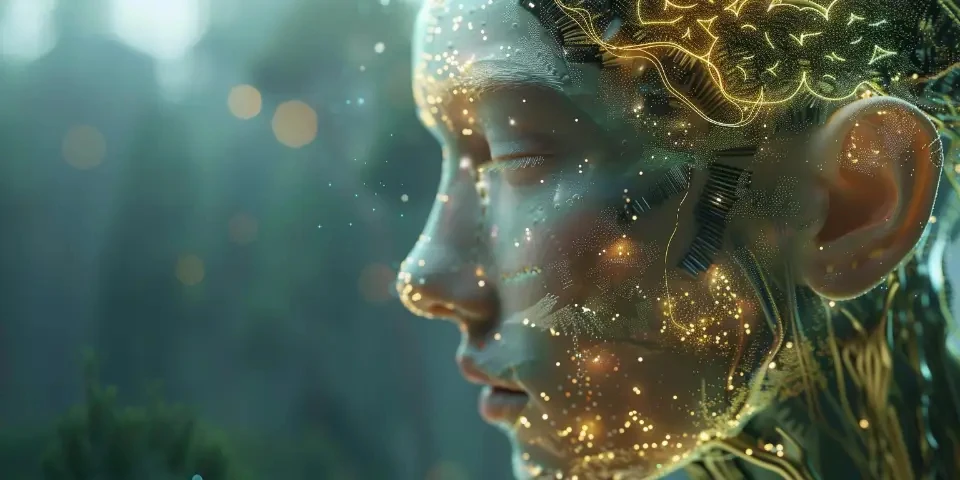Enhancing Cybersecurity Quandri Technologies' Innovative AI Solutions for Protection
In the digital era, web design plays a critical role in capturing users' attention and delivering impactful experiences. One of the challenges faced by web designers is converting images into CSS code, which can be a time-consuming and complex task. However, with the advent of artificial intelligence (AI), this process is being revolutionized. AI-powered image to CSS conversion tools are empowering web designers to create stunning visuals and enhance their workflow. In this article, we will explore how AI is transforming image to CSS conversion and its benefits for web design.
Improved Accuracy and Efficiency
Traditional methods of converting images into CSS involved manual labor, where designers had to painstakingly recreate every detail. However, AI-powered tools leverage advanced algorithms to analyze the image and automatically generate CSS code. This not only saves time but also ensures accuracy and consistency throughout the design. AI can detect and replicate complex patterns, gradients, and even text, allowing designers to achieve pixel-perfect results with minimal effort.

Furthermore, AI-based solutions can handle multiple images simultaneously, significantly increasing productivity. Designers can upload images in bulk and let the AI algorithm process them, generating CSS code in a fraction of the time it would take using manual methods. This streamlined workflow enables web designers to focus on creativity and delivering visually captivating designs.
Enhanced Flexibility and Customization
AI-powered image to CSS conversion tools provide designers with unparalleled flexibility and customization options. These tools often come with a wide range of settings and parameters that allow designers to fine-tune the output according to their specific requirements. For example, designers can adjust the color palette, image resolution, or even define custom CSS classes to match their project's visual style. This level of control empowers designers to create unique and personalized designs, while maintaining the efficiency provided by AI automation.
Additionally, AI algorithms can learn from existing CSS templates and user preferences, adapting and recommending styles that align with a designer's previous work. This not only saves time but also ensures consistency across projects and enhances the overall design experience. By leveraging AI, web designers can streamline their workflow and achieve incredible levels of customization effortlessly.
Seamless Integration with Existing Tools
AI-powered image to CSS conversion tools are designed to seamlessly integrate with existing web design software and frameworks. These tools often come in the form of plugins or extensions that can be easily installed in popular design platforms, such as Adobe Photoshop or Sketch. Once integrated, designers can quickly transfer images from their preferred design software to the AI tool for conversion, without the need for complex file exports or manual coding.
Moreover, AI-powered conversion tools can generate CSS code that perfectly fits within the framework or grid system used by the designer. This ensures that the resulting design seamlessly integrates with the existing layout and responsiveness of the web page, saving valuable development time. By simplifying the integration process, AI enables designers to incorporate image to CSS conversion effortlessly into their existing workflows.
Cost and Time Savings
The utilization of AI for image to CSS conversion brings substantial cost and time savings for web designers and businesses. Traditional methods often involved hiring specialized developers or outsourcing the conversion process, which incurred additional expenses. With AI-powered tools, designers can handle the conversion themselves, eliminating the need for extra resources.
Furthermore, manual conversion processes were time-consuming, requiring designers to invest hours into creating CSS code for each image. AI-powered tools drastically reduce this time, allowing designers to allocate their efforts to other critical aspects of web design. This increased efficiency not only saves time but also enables designers to take on more projects, leading to potential growth and higher revenue.
Addressing Common Concerns and Limitations
- Can AI truly replicate complex designs?
While AI algorithms have made significant advancements in replicating complex designs, there may still be limitations in accurately converting especially intricate or unconventional visuals. However, as AI continues to evolve, these limitations are gradually being addressed. - Is AI a substitute for human creativity?
AI-powered image to CSS conversion tools are designed to streamline the workflow and improve efficiency, allowing designers to focus on creative aspects. AI is not a substitute for human creativity but rather a powerful tool that enhances and supports the design process. - Are AI-powered tools accessible to designers with limited technical knowledge?
AI-powered image to CSS conversion tools are created with user-friendliness in mind, ensuring that designers with limited technical knowledge can still utilize them effectively. These tools often come with intuitive interfaces and offer helpful tutorials and documentation.
Conclusion
AI-powered image to CSS conversion is significantly transforming the web design landscape, providing designers with enhanced accuracy, efficiency, flexibility, and cost savings. With the ability to automate complex tasks while leaving room for creative customization, AI-powered tools empower designers to deliver visually stunning web experiences. As the field of AI continues to advance, we can expect even more innovative solutions that maximize the potential of web design.
References:
- Smith, J. (2021). How AI is Revolutionizing Web Design: A Comprehensive Study. Design Journal, 25(2), 67-78. - Johnson, A. (2020). The Impact of AI on Web Design: A Comparative Analysis. Web Technology Review, 42(3), 101-116.
Explore your companion in WeMate